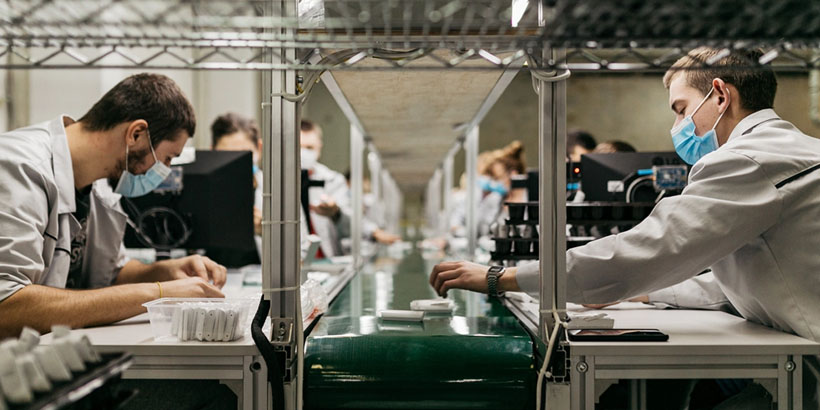
When it comes to security systems, consistent quality is an important attribute. Installers and integrators need to be ensured that specified products will be suitable for always-on life-safety solutions, and this places an onus on suppliers to deliver reliable products, every time, all of the time. As a result, manufacturers put in place quality assurance schemes which often address three main elements: company management and operational procedures, manufacturing processes and product testing.
Many standards exist for business management and operational processes, and there are a depth of documents relating to products and technologies, covering features and functions, stability, power requirements, etc.. However, if a manufacturer is actively involved in quality testing, what does this mean? While standards exist which outline technical characteristics, how can customers be sure the testing is thorough?
When a company states it takes product testing seriously, what are they actually doing? Do they test specific features or components at various stages of the manufacturing process, or do they select finished products for a full assessment? How are products selected for testing, and how often are the tests carried out? It can be hard to define exactly what any given manufacturer’s approach is, despite it being a critical consideration when specifying security and safety systems.
There are many security standards relating to product performance and usage, along with standards which address a company’s quality assurance, there is also a standard which gives guidance to how quality assurance and testing should be carried out. ISO/IEC 17067:2013 doesn’t specify which tests should be carried out; it provides guidelines which can be used to develop, run and manage certification schemes for products, processes and services.
One significant part of this document sets out how testing bodies can apply different levels of testing, referred to as Types of testing, when assessing whether a device or system meets a certain standard. The reason there are six different Types specified in the document is because it applies to a wide variety of quality assurance schemes, including those for services and processes, as well as for products.
Some of described Types of testing are not relevant to products, focusing instead on the provision of services and processes, but Type 5 testing is created for use when assessing products. Type 5 testing includes assessments of management principles and manufacturing processes, as well as product testing with samples taken from the factory production line, warehousing or the open market trade network.
With testing carried out in accordance with the ISO/IEC 17067:2013 guidelines, auditors inspect processes and randomly select devices for testing. This selection process eliminates the possibility of ‘golden samples’ being put forward for assessment. Tests are carried out by independent product certification bodies.
Ajax uses Trezor Test, based in Czechia, to carry out independent testing. The manufacturer points out that while many suppliers initiate their own device tests, these may not be consistent, whereas third party testing is regulated.
When testing based on the Type 5 guidelines is carried out, there are three elements. The first is Quality Management System Certification according to ISO 9001:2015. Ajax obtained this certification, having passed tests for compliance. The second element is an annual factory audit which assesses the processes and management. The third element is product testing. Randomly selected samples are tested by two Test Houses in Czechia: TESTALARM and CMI.
Devices are tested for resistance to mechanical and climatic influences, as well as to external electromagnetic interference. Functional characteristics, such as radio quality and the possibility of impacting on performance externally are assessed. Sensors are exposed to hot air and halogen lamps to simulate sunlight. Devices are exposed to humidity over long periods.
When assessing the manufacturer itself, a quality assurance manual is required. This allows the auditors to understand the manufacturing processes, and a factory visit is conducted to confirm they are adhered to. Attention is paid to test equipment, the qualifications of staff, training schemes and the manufacturing processes.
All departments of the company are assessed including R&D, procurement, technical support, sales and marketing, as well as HR.
In June 2018, Ajax received certification for compliance with European standards. The certification is valid for three years, and every year the company undergoes a supervisory audit with periodic tests of devices. This demonstrates ongoing compliance with the quality standards.







